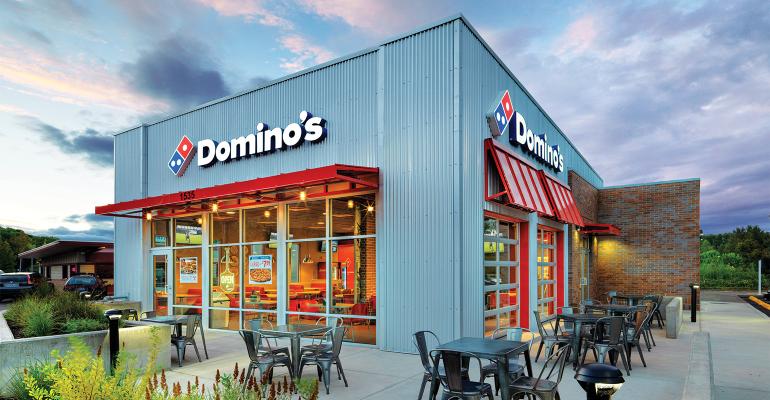Domino’s Pizza Inc. will emphasize its aggressive franchise fortressing strategy to combat competition from third-party deliver outlets, the company said as it reported first quarter domestic same-store sales growth of 3.9%.
The results marked the 32nd consecutive quarter of same-store sales growth for the Ann Arbor, Mich.-based pizza chain, driven by ticket and order growth, but also represents the slowest quarter of same-store sales growth for the brand in at least three years.
Revenues for the quarter increased 6.4% to $836 million, from $785.4 million the same quarter the year prior. Net income was $92.7 million, or $2.20 per share, up 11.1% from $88.8 million or $2 per share the same quarter a year earlier.
Despite performance falling short of analyst predictions and “soft” international sales growth, Domino’s shares were up more than 9% as of Wednesday morning.
CEO Ritch Allison indicated disappointment in the company’s “soft performance” in international markets, marked by 1.8% international same-store sales growth, down from 5% in the same quarter last year.
“I am not happy with recent international comps performance,” Allison said during the call. “One area we plan to step up is in the use of and reliance on customer insights and data […] Data decision-making has improved performance in many areas for us. Lately it has enhanced our in-store performance [and will continue to] support our fortressing initiative.”
Fortressing continues to be a key Domino’s strategy for long-term growth, as first outlined at the company’s investor conference in January. By pursuing aggressive store growth within the same markets, the company hopes to cut down on driving and customer wait times, and cut into tough competition from third-party delivery services like GrubHub Inc. and UberEats.
“Big increases in advertising spend by third-party delivery around free or discounted delivery led to a lot of trial in urban and suburban markets,” Allison said during the earnings call, noting that the competition had a “slightly greater impact” on Domino’s domestic same-store sales.
But Domino’s won’t be pursuing third-party delivery partnerships, as some of its competitors, including Papa John’s, have.
“It’s not clear why I would want to give up the franchisee’s margin or data in the business and give it to someone who would ultimately use it against our business,” Allison said during the call.
Loyalty is another key aspect of Domino’s strategy moving forward. Allison cited the Points for Pies loyalty rewards program, which launched last quarter ahead of the Super Bowl and rewards customers for eating any pizza, even from rival brands, as a success thus far.
“The Points for Pies program helped us drive sales but most importantly it helped us continue to reinforce loyalty program membership,” Allison said during the call. “We have more than 20 million active members and we saw increases last quarter in app downloads and loyalty membership.”
Domino’s opened 173 net new stores internationally, and 27 new U.S. stores during the first quarter of 2019.
As of March 24, Domino’s has 16,114 stores globally.
Contact Joanna Fantozzi at [email protected]
Follow her on Twitter: @JoannaFantozzi




